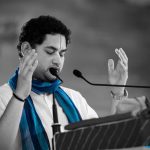Naraka Chaturdashi – Diwali of South India
Though Diwali is celebrated throughout India, however there are differences in the ways in which it is celebrated in different regions of the country. Often there is one day difference in the North and South Indian celebrations. Lighting of Diya’s and bursting crackers is all same, the only difference is South Indians celebrate a day earlier than North Indians and celebrate it early in the morning where as North Indians celebrate the Diwali on No moon day (Amavasya) and in the evening with Lakshmi Pooja.
In South India, Diwali is being celebrated as Naraka Chaturdashi. Festivities are on in Tamil Nadu, Karnataka, Kerala, Andhra Pradesh and Telangana. However in the last two states Diwali is celebrated as a two-day festival with Naraka Chaturdasi being the day where the men are given the victory bathe and the amavasya as the Lakshmi Pooja and Diwali day.
In the South, Diwali festival often commemorates the conquering of the Asura Naraka, a powerful king of Assam, who imprisoned tens of thousands of inhabitants. It was Krishna who finally subdued Naraka and freed the prisoners.
Legends
According to Hindu legend, this day commemorates the victory of Kali, Satyabhama and Krishna over Narakasura the demon-king. Naraka Chaturdashi is also celebrated as ‘Chhoti Diwali’ or ‘Kali Puja’ in some places. It is believed that the day is auspicious to get rid of a hex, curse, black magic or bad luck.
According to Hindu literature, Narakasura was a demon-king who had imprisoned 16,000 women which included the daughters of the Gods. He had also defeated the king of the Gods, Lord Indra and stolen the earrings from Aditi, the mother of the Gods. Goddess Kali, Goddess Satyabhama and Lord Krishna thus fought the battle with the demon and defeated him with Krishna’s Sudarshana Chakra and Lord Krishna smeared his forehead with Naraka’s blood.
Chhoti Diwali
The day before Diwali is generally termed as ‘Chhoti Diwali’ or ‘Kali Puja’ in various parts of India. A thorough Pre-Diwali cleaning is done throughout the house to welcome Goddess Lakshmi, the goddess of wealth. Decorations are also put up at home and colourful Rangoli patterns are drawn at the doorstep and are lit with diyas to welcome the goddess on Diwali. Firecrackers are brought out in the evening and are burst by children and adults alike, spreading light across neighbourhoods. This particular custom is mostly followed in the northern and western parts of the country, though it is celebrated in the other parts as well.

Kali Puja
The literal meaning of ‘Kali Chaudas’ is dark and fourteenth, the day when Kali Puja or Shakti Puja is done. Kali Puja is usually celebrated in the eastern part of the country, where people pray for protection against spiritual, emotional and physical adversities. Children seem to the most excited as they go shopping for firecrackers and Diwali bombs for the next evening.
Rituals
Festival is celebrated in Tamil month of aipasi (thula month) ‘naraka chaturdasi’ thithi, preceding amavasya. The preparations begin the day before, when the oven is cleaned, smeared with lime, four or five kumkum dots are applied, and then it is filled with water for the next day’s oil bath. The house is washed and decorated with kolam (rangoli) patterns with kavi (red oxide). In the pooja room, betel leaves, betel nuts, plaintain fruits, flowers, sandal paste, kumkum, gingelly oil, turmeric powder, scented powder are kept. Crackers and new dresses are placed in a plate after smearing a little kumkum or sandal paste.
The house is lit up with oil lamps and the ladies of the house perform aarti of the men. New clothes are worn by the family members and sweets are offered to God. Special sweets and savouries are distributed to family and friends such as Laddus, Chaklis, Sakkaparas, Badamhalwa and Poha.
Narak Chaturdashi is celebrated in a special way in Goa, where paper-made effigies stuffed with grass and firecrackers are burst at four in the morning. Men take scented oil baths, while the women perform aarti for them. A bitter berry called the Kareeta is crushed under the feet which symbolises the killing of Narakasura, and the removal of evil and ignorance.
Gifts are exchanged and the atmosphere is filled with a mood of celebration and festivity. Different kinds of poha and sweets are prepared, offered to the God and enjoyed with family and friends. Diwali is usually celebrated on Narak Chaturdashi in south India, while others celebrate it on new moon night.









